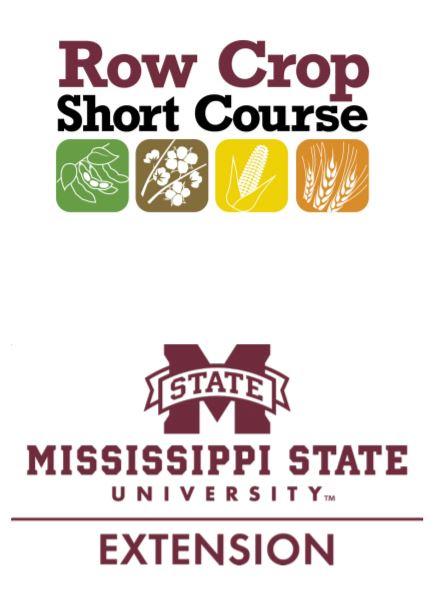
Credit: Mississippi State University
St. Paul, MN (March 28, 2019)–The 2018 Mississippi State University (MSU) Row Crop Short Course, held in December, showcased presentations by growers, industry experts, and row crop specialists on topics such as nematode management, weed control, off-target movement of herbicides, and the 2019 economic outlook. Twenty of those presentations can be viewed online as part of the “Focus on Cotton” series:
Day 1
- “Managing Nematodes in Cotton and Soybean,” Travis Faske, University of Arkansas
- “Where Does Your Fertilizer Come From & What Determines Cost?” Trey Cutts, Yara North America Inc.
- “Cover Crops and Soil Health,” Bill Robertson, University of Arkansas
- “Increasing Profitability Through Diversity: My Experiences With Cover Crops and No-Till,” Adam Chappell, Chappell Brothers Farm LLC
- “Tracking Down Off-Target Movement of Herbicides: Tips and Tricks,” Eric P. Webster, Louisiana State University
- “Detecting Dicamba & 2,4-D in Plant Tissue: What Are the Possibilities,” Daniel B. Reynolds, Mississippi State University
- “Herbicide Application Timing: Effect on Weed Control Efficacy,” Jason A. Bond, Mississippi State University
Day 2
- “Insecticide Resistance Monitoring & the Role of Novaluron on TPB,” Fred Musser, Mississippi State University
- “Corn Insects: Management Options for Maximizing Profits,” Don Cook, Mississippi State University
- “Management of Caterpillar Pests in Soybean,” Gus Lorenz, University of Arkansas
- “Impact of Cover Crops on Soybean Insect Management,” Angus Catchot, Mississippi State University
- “Management of Bollworms in Bt Cotton in LA: Experiences to Date,” Sebe Brown, Louisiana State University
- “Management of Bollworms in Bt Cotton in MS: Experiences to Date,” Angus Catchot, Mississippi State University
- “Economics of Managing Insect Pests of Cotton,” Jeff Gore, Mississippi State University
- “Temperature Inversions and Off-target Movement of Herbicides,” Richard H. Grant, Purdue University
- “Soil Sensing Technology on the Planter,” Jason Webster, Precision Planting
- “Sulfur Nutrition in Row Crops,” Ross Bender, The Mosaic Company
- “A Closer Look at Potassium Deficiencies in Cotton,” Tyson B. Raper, University of Tennessee
- “Soybean Management Considerations for 2019,” Trent Irby, Mississippi State University
- “Economics of Cotton Fertility Management,” Darrin M. Dodds, Mississippi State University
These presentations are available through the “Focus on Cotton” resource on the Plant Management Network. This resource contains more than 100 webcasts, along with presentations from six other conferences, on a broad range of aspects of cotton crop management: agronomic practices, diseases, harvest and ginning, insects, irrigation, nematodes, precision agriculture, soil health and crop fertility, and weeds. These webcasts are available to readers open access (without a subscription).
The “Focus on Cotton” homepage also provides access to “Cotton Cultivated,” a new resource from Cotton Incorporated that helps users quickly find the most current cotton production information available. These and other resources are freely available courtesy of Cotton Incorporated at http://www.
###
About Plant Management Network: Plant Management Network (PMN) is a cooperative, not-for-profit resource for the applied agricultural and horticultural sciences. Together with more than 80 partners, which include land-grant universities, scientific societies, and agribusinesses, PMN publishes quality, applied, and science-based information for practitioners. All subscription-based information on PMN can be accessed for an annual subscription fee.
About the Cotton Board: The Cotton Research & Promotion Act established the Cotton Board as a quasi-governmental, nonprofit entity to serve as the administrator of the Cotton Research & Promotion Program. Funded by America’s cotton producers and importers through the cotton check-off, the program’s research and promotion activities are conducted worldwide by Cotton Incorporated, the Cotton Board’s sole-source contracting organization, to increase the demand for and improve the market position of cotton.
The Cotton Research & Promotion Program continues to work in all areas of cotton’s pipeline–from the field to the consumer–to keep cotton the number-one fiber choice in the United States. For more information about the Cotton Board and the innovative activities stemming from the program, visit http://www.
Media Contact
Susan Freese
[email protected]




